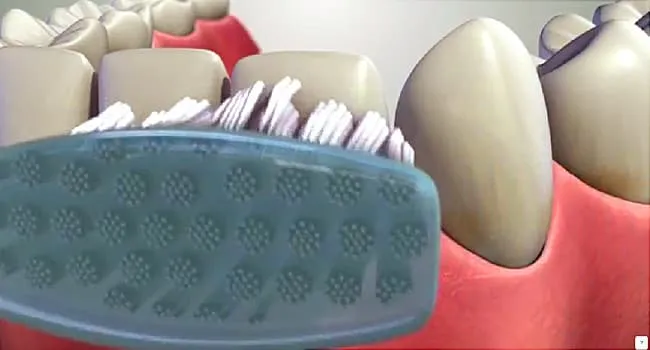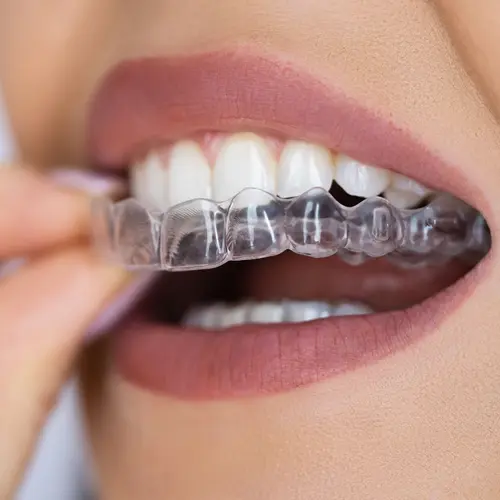What Is Plaque?
Plaque is a sticky film of bacteria that forms on your teeth, both above and below your gumline. If you run your tongue over your teeth and they feel fuzzy, what you're feeling is the plaque film.
You normally have bacteria in your mouth because you need them to help you digest and absorb the food you eat. When you eat, the bacteria in your mouth start the digestive process by breaking down the sugars and carbohydrates. These partly broken-down carbohydrates form the main part of the sticky and acidic film that makes up plaque.
If you don't get rid of plaque, it can harden and cause cavities, gum disease, and other issues with your teeth and gums. Fortunately, you can help get rid of plaque by flossing and brushing every day and getting your teeth cleaned once a year at your dentist's office.
What Is Tartar?
Tartar (also called dental calculus) is hardened plaque. Any plaque that you don't remove by flossing and brushing hardens over time into tartar.
Tartar is made up of dead bacteria and spit that has mineralized into calcium phosphate, calcium carbonate, and magnesium phosphate. You can't get rid of it by brushing and flossing; you'll need to have it cleaned off your teeth by your dental hygienist or dentist.
What does tartar look like?
Tartar may look like yellow, brown, or black stains on your teeth, especially around your gumline.
Plaque vs. tartar
Unlike tartar, plaque is generally colorless, so you won't necessarily be able to see it. But it may also discolor your teeth so they look yellow or brown.
How Does Tartar Affect Your Teeth and Gums?
Tartar that develops on your teeth and above your gumline can cause:
- Stains on your teeth
- Bad breath (halitosis)
- Red, swollen, or bleeding gums (gingivitis)
- A permanent hard coating on your teeth
- Enamel erosion and cavities
- Gum recession
- Gum disease (periodontal disease)
Tips to Help Control Tartar
Your best bet is not to let tartar form on your teeth. Here's how:
Brushing regularly
Brush regularly, twice a day for 2 minutes at a time with a fluoride toothpaste.
Use a brush with soft bristles that is small enough to fit into your mouth. Be sure to brush those hard-to-reach surfaces behind your teeth and on your rear molars.

Electric toothbrushes
Studies have found that electronic, or powered, toothbrushes may get rid of plaque better than manual models. No matter which type you use, be sure it has the American Dental Association (ADA) seal of approval. These have undergone rigorous quality control and safety tests.
Flossing and rinsing
Floss, floss, floss. No matter how good you are with a toothbrush, dental floss is the only way to remove plaque between your teeth and keep tartar out of these hard-to-reach areas.
Rinse daily. Use an antiseptic mouthwash daily to help kill bacteria that cause plaque.
Diet
Watch your diet. The bacteria in your mouth thrive on sugary and starchy foods. When they’re exposed to those foods, they release harmful acids. Try to eat a healthy diet and limit the amount of sugary foods you eat. That goes for snacks, too. Every time you eat, you also feed the bacteria in your mouth. You don't have to give up sweets or snacks between meals. Just be mindful of how often you indulge. Brush your teeth and drink plenty of water during and after meals.
Smoking
Don't smoke. Studies show that people who smoke cigarettes or use other tobacco products are more likely to have tartar.
How to Remove Tartar From Teeth
Only a dental professional will be able to remove tartar from your teeth once it has formed. Generally, you should see your dentist once or twice a year to have your teeth professionally cleaned. They'll remove any plaque and tartar that might have formed since your last cleaning. Some people may be more prone to plaque and tartar buildup; so, they may need to visit their dentist more than twice a year. Ask your dentist how often to get your teeth cleaned based on your specific oral health situation.
How to remove tartar from teeth without a dentist
Don't try to remove tartar from your teeth by yourself. You may wind up damaging your teeth and gums, which may make it more likely for you to get cavities, gum disease, and tooth loss.
Best toothpaste for tartar removal
Brushing at home won't remove tartar, and you don't need a special toothpaste to prevent it. Just choose any toothpaste with fluoride and brush twice a day. Fluoride helps repair any damage to your enamel and can prevent it from getting worse. If you have gingivitis or gum disease, your dentist may prescribe a special toothpaste that has triclosan, which can kill the bacteria that cause plaque and tartar.
Make sure you floss once a day to remove the plaque that builds up between your teeth and above your gumline — where your toothbrush can't reach.
Takeaways
Tartar is a hardened plaque film on your teeth. It can cause cavities and gum disease if it's not removed. You can't remove it yourself; you'll have to visit your dentist for a professional cleaning. The best way to prevent tartar is to practice good oral hygiene — brush twice a day with a fluoride toothpaste, floss once a day, and get your teeth cleaned every 6 months or so.
Tartar FAQs
Can a Waterpik remove tartar?
No, a Waterpik (or any other brand of water flosser) cannot remove tartar, but a water flosser can remove the plaque that hardens into tartar. Some studies even suggest that a water flosser removes plaque a bit better than string floss, especially between your teeth.
Can tooth tartar break off?
Yes, tartar can break off of your teeth, perhaps when you're eating hard foods or brushing too hard. This can leave you with rough or sharp patches on your teeth around your gums. If you notice this happening, it's time to visit your dentist to get your teeth cleaned.
Does hydrogen peroxide dissolve tartar?
No, hydrogen peroxide doesn't dissolve tartar, but it can help remove the plaque that hardens into tartar.
Is tartar removal painful?
It's usually not painful, but it can be uncomfortable for some people. If you have a lot of tartar, swollen gums, or sensitive teeth (this is usually due to gum recession which exposes your tooth's root), you may be more likely to have discomfort when your dental hygienist removes your tartar. If you're worried about it, talk to your dentist. They may be able to numb your gums before you get your cleaning.

